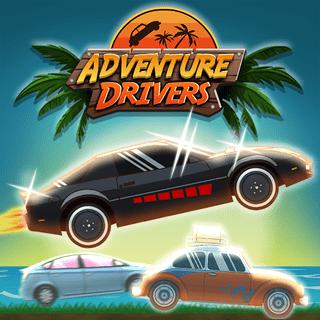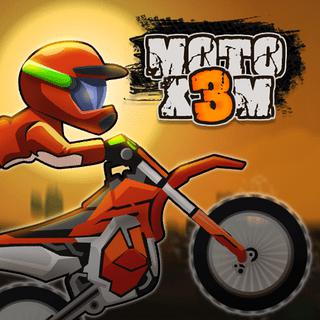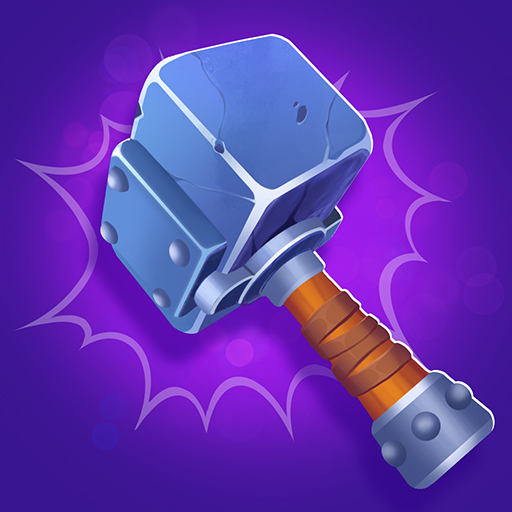

Survival 456

Santa Parkour

Maze

Merge Jewels

Bouncy Barn

Kick The Zomb

Amazing Airpl

Egg Farm

Bike Stunt Ra

Stickman Puni

Wiggle

Find In Mind

Car Escape

Caitlyn Dress

3d Free Kick

Stick Duel: R

Stickman Rugb

Funny Cooking

Fruit Sort Pu

Bazooka Boy O

Doge Bubble

Fall Bean 2

Block Craft 3

Sneak Out 3d

3d Chess

Jigsaw Puzzle

Minewar Soldi

Noob Chicken

Domie Love Pr

Drag Racing C

Animal Quiz

My Fairytale

Sauna Run

Jewelish

High Hills

Knife Rain

1010 Golden T

Baby Lily Sic

Color Line 3d

Fill The Bott

Solitaire Leg

3d Anime Fant

Magic Finger

Kings And Que

Happy Koala

Moto X3m Pool

Nugget Man Su

My Perfect Mi

Adventure Dri

Fallingman.io

Defly.io

3d Darts

Run Boys

Onet World

Angry Farm Cr

Lawn Mower

Spot 5 Differ

Fruit Matcher

Citymix Solit

Drift Race 3d

Fruit War

Blocks Puzzle

Flipper Dunk

Grand Vegas S

Dirt Bike Ext

Runner Coaste

My Fairytale

Cheap Golf

Tropical Matc

Bubble Woods

Helicopter Re

Money Grabber

Dangerous Rid

Dunk Brush

Real Car Pro

Baby Lily Car

Emergency Sur

Wood Block Ta

Real Car Park

Perfect Piano

Seafaring Mem

3d Basketball

Three Disks

Happy Panda

Fashion Princ

Fruitways Mat

Color Race 3d

Element Block

Moto X3m

Save Strandin

X2 Block Matc

Gravity

Jumping Toget

Get 12

Crazy Plane S

Soccer Merge

Two Aliens Ad

Noob Draw Pun

Blaze Kick

Zoo Boom

Christmas Tru

Kitchen Mahjo

Mahjong Aroun

9x9 Rotate An

Motor Tour

Pirate Cards

Secret Of Amu

Sticky Road

Dirt Bike Mot

Sticky Ball R

Baby Lily Bir

Kawaii Chibi
Sailor Girls

Bunny Quest

Goalkeeper Ch

Adventure Qui

1000 Blocks

Super Car Ext

Burnout Crazy

Orbit

Auto Rickshaw

Domino Battle

Design With M

Nubik Courier

Cat Life Simu

Landmine Cube

Hammer Master

Idle Factory

Granny Pills

World Tank Wa

Halloween Sca

Vacation Summ

Cosplay Gamer

Block Blast

Shoot The Can

Christmas Mem

Couple Rich R

Noob Vs Pro V

Cake Blocks C

Cycle Sprint

Scary Maze

Panda Command

Super Slope G

Princess Ella

Jewel Christm

Princess Gala

Alus Revenge

Doodieman Baz

Tile Journey

Tri Peaks Sol

Fitz Color

Robbotto

Stickman Choo

Gt Cars City

Butterfly Kyo

Spin Shot Sie

Festival Vibe

Crazy Traffic

Tile Match Co

New Year Ball

Grand Cyber C

Banana Cat Es

Alone Ii

Tower Match

Puper Ball

Zombie Paradi

Nova Covered
Street racing involves high-performance vehicles competing on public roads, often illegally, under the cover of night or in secluded areas to avoid law enforcement. Participants modify cars with enhanced engines, suspension systems, and aerodynamic kits to maximize speed and handling. The allure lies in its raw, rebellious nature, where drivers test their skills on unpredictable urban courses with tight corners, traffic hazards, and changing road conditions. Races can be spontaneous or organized, ranging from short sprints to longer pursuits. Safety concerns are paramount due to the lack of controlled environments, leading to crackdowns in many regions. Despite this, street racing thrives in underground communities, fueled by a culture of car modification and bravado.
The discipline emphasizes quick acceleration and precise handling, as drivers navigate city streets with minimal room for error. Spectators are drawn to the accessibility of street racing, as it transforms familiar urban landscapes into high-stakes battlegrounds. However, the risks—collisions, pedestrian endangerment, and legal consequences—cast a shadow over its popularity, pushing some enthusiasts toward sanctioned alternatives.
Circuit racing takes place on purpose-built tracks designed with a mix of straights, curves, and elevation changes to challenge drivers’ skills. These closed-loop courses, often paved with smooth asphalt, host professional events with strict regulations on vehicle specifications, safety gear, and race formats. Drivers compete over multiple laps, balancing speed with strategy, such as tire management and pit stops. The controlled environment ensures safety through barriers, runoff areas, and medical teams on standby.
This discipline demands consistency and endurance, as races can last from short sprints to hours-long events. Fans are captivated by the precision of overtaking maneuvers and the tactical depth of racecraft. Circuit racing’s structured nature makes it a cornerstone of motorsport, with categories ranging from single-seaters to touring cars, each requiring specialized skills. Its global appeal stems from iconic venues and the accessibility of watching high-speed duels in a safe, organized setting.
Drag racing is a straight-line sprint between two vehicles over a fixed distance, typically a quarter-mile or eighth-mile. Competitors line up side by side, launching from a standstill when signaled by a starting system, often a “Christmas tree” light sequence. The objective is simple: cross the finish line first. Vehicles are highly specialized, with powerful engines producing thousands of horsepower, lightweight chassis, and slick tires for maximum traction.
The discipline thrives on raw power and reaction time, as drivers must perfect their launch to avoid wheelspin or premature starts, which result in disqualification. Races last mere seconds, making every millisecond critical. Spectators are drawn to the explosive starts, deafening engine roars, and the sheer spectacle of vehicles accelerating to triple-digit speeds in moments. Drag racing’s simplicity and intensity make it a staple of motorsport, with events ranging from grassroots meets to professional championships.
Drift racing, or drifting, prioritizes style and control over outright speed. Drivers intentionally oversteer to maintain a controlled slide through corners, judged on criteria like angle, line, speed, and showmanship. Competitions often feature head-to-head battles, where drivers follow or lead through a course, aiming to outperform their opponent. Vehicles are rear-wheel-drive, modified with stiff suspensions, limited-slip differentials, and high-power engines to sustain slides.
The discipline requires finesse, as drivers modulate throttle, steering, and brakes to maintain drift without spinning out. Its visual flair—clouds of tire smoke, dramatic car angles, and close-proximity duels—captivates audiences. Drifting originated as a street-based subculture but has evolved into a professional sport with global followings. Its accessibility, with grassroots events welcoming amateurs, and its emphasis on creativity make it a vibrant, youth-driven segment of motorsport.
Off-road racing takes place on rugged, unpaved terrains like deserts, forests, or mountains, testing vehicles’ durability and drivers’ adaptability. Courses feature obstacles such as rocks, mud, sand, and jumps, requiring specialized vehicles with high ground clearance, robust suspensions, and all-terrain tires. Races vary from short-course events on compact tracks to long-distance desert rallies spanning hundreds of miles.
Drivers must navigate unpredictable conditions, balancing speed with vehicle preservation. The discipline’s appeal lies in its raw, adventurous spirit, as competitors conquer nature’s challenges. Spectators enjoy the spectacle of vehicles tackling extreme terrain, often in remote locations that evoke a sense of exploration. Off-road racing’s diversity, from trophy trucks to buggies, ensures broad appeal, with events drawing both hardcore enthusiasts and casual fans seeking high-octane adventure.
Rally racing involves point-to-point races on diverse surfaces—gravel, tarmac, snow, or mud—often on public or closed roads. Drivers compete against the clock in timed stages, guided by a co-driver reading pace notes to anticipate turns and hazards. Vehicles are production-based but heavily modified for durability, with roll cages, turbocharged engines, and all-wheel-drive systems. Races span days, covering hundreds of miles across varied conditions.
The discipline demands versatility, as drivers adapt to changing surfaces and weather while maintaining high speeds. Co-drivers play a critical role, requiring seamless communication under pressure. Rally’s unpredictable nature, from narrow forest paths to open desert stretches, creates intense competition. Fans are drawn to the accessibility of roadside viewing and the drama of cars navigating treacherous courses, making rally a globally celebrated motorsport with a rich heritage.
Kart racing involves small, lightweight go-karts competing on scaled-down circuits. These open-wheel vehicles, powered by two-stroke or four-stroke engines, offer high power-to-weight ratios, delivering surprising speed despite their size. Tracks are tight and twisty, emphasizing driver skill over raw power. Karting serves as an entry point to motorsport, with categories for children, amateurs, and professionals.
The discipline hones reflexes, precision, and racecraft, as drivers navigate close-quarters racing with minimal protection. Its affordability and accessibility make it a breeding ground for future champions, many of whom start young. Spectators enjoy the frenetic pace and aggressive overtaking, as karts dart through corners inches apart. Kart racing’s simplicity and purity keep it a beloved grassroots sport, with competitive scenes thriving worldwide.
Motorcycle racing encompasses various formats, from road-based circuits to off-road tracks, where riders compete on two-wheeled machines. Categories include superbikes, motocross, and speedway, each requiring specialized bikes and skills. Road racing features high-speed duels on paved tracks, with riders leaning into corners at extreme angles. Off-road disciplines like motocross involve jumps and rough terrain, demanding physical endurance and technical control.
The discipline showcases rider athleticism, as balance, reflexes, and bravery define success. Races are often shorter but intensely competitive, with close pack racing amplifying the excitement. Spectators are drawn to the visceral thrill of bikes accelerating rapidly and navigating tight spaces. Motorcycle racing’s diversity and daring appeal to adrenaline junkies, with global events showcasing both cutting-edge technology and human courage.
Endurance racing tests drivers, teams, and vehicles over long-distance races, often lasting six, twelve, or twenty-four hours. Competitors aim to cover the greatest distance within the time limit, balancing speed with reliability to avoid mechanical failures. Teams rotate multiple drivers and execute pit stops for refueling, tire changes, and repairs. Vehicles range from sports cars to prototypes, designed for efficiency and durability.
The discipline requires strategic planning, as teams manage fuel consumption, tire wear, and driver stamina. Its grueling nature creates dramatic narratives, as mechanical issues or crashes can shift standings late in the race. Fans are captivated by the test of human and machine endurance, with iconic events drawing massive crowds. Endurance racing’s blend of speed, strategy, and resilience makes it a pinnacle of motorsport.
Open-world racing unfolds across expansive, non-linear environments, allowing drivers to explore diverse landscapes while competing. Courses may include cities, countryside, or fictional locales, with races ranging from point-to-point sprints to objective-based challenges. Vehicles vary widely, from supercars to off-road trucks, encouraging adaptability. The freedom to choose routes or engage in side activities adds a layer of exploration.
The discipline emphasizes versatility, as drivers encounter mixed surfaces and dynamic conditions. Its immersive nature appeals to those seeking adventure beyond traditional tracks, with vibrant settings enhancing the experience. Spectators, often participants themselves in virtual formats, enjoy the blend of competition and discovery. Open-world racing’s flexibility and visual richness make it a dynamic, evolving category in motorsport.
Simulation racing focuses on replicating real-world driving dynamics with high fidelity, often in virtual environments. Competitors use advanced setups with steering wheels, pedals, and motion rigs to mimic the feel of actual vehicles. Tracks and cars are modeled with precision, incorporating realistic physics, tire wear, and weather effects. Events range from solo time trials to online leagues with global participants.
The discipline demands technical skill and deep understanding of vehicle dynamics, as drivers fine-tune setups for optimal performance. Its accessibility, requiring only a computer or console, has democratized motorsport, allowing amateurs to compete with professionals. Fans appreciate the authenticity and strategic depth, with broadcasts showcasing intense virtual battles. Simulation racing’s growth, fueled by technology and community engagement, has made it a legitimate motorsport frontier.
Arcade racing prioritizes fun and accessibility over realism, featuring exaggerated physics, vibrant visuals, and simplified controls. Races occur in varied settings, from urban streets to fantastical worlds, with vehicles performing improbable feats like jumps or boosts. Power-ups, shortcuts, and dynamic obstacles add unpredictability, encouraging aggressive driving and quick reflexes.
The discipline appeals to casual audiences, as its forgiving mechanics allow immediate enjoyment without a steep learning curve. Competitive formats exist, but the focus remains on entertainment, with colorful aesthetics and high-energy soundtracks enhancing the experience. Spectators and participants alike are drawn to the chaotic, lighthearted action, making arcade racing a gateway to motorsport enthusiasm. Its inclusivity and spectacle ensure enduring popularity.
Futuristic racing envisions high-speed competition in advanced, often sci-fi-inspired settings. Vehicles, resembling hovercraft or anti-gravity pods, race on tracks with loops, vertical climbs, or airborne sections. Technology like energy shields, speed boosts, or magnetic rails enhances gameplay, while courses push the boundaries of physics with surreal designs. Competitions emphasize reflexes and strategic use of power-ups.
The discipline captivates with its imaginative scope, blending cutting-edge visuals with innovative mechanics. Drivers must master unconventional tracks and adapt to dynamic race conditions, creating thrilling spectacles. Fans are drawn to the otherworldly aesthetics and fast-paced action, which evoke a sense of limitless possibility. Futuristic racing’s blend of creativity and intensity makes it a standout in motorsport’s evolution.
Demolition derby pits drivers against each other in a chaotic battle where vehicles deliberately collide to disable opponents. The last car still operational wins, with events held in arenas or dirt pits. Vehicles are reinforced with roll cages and bumpers but lack high-end modifications, emphasizing durability over speed. Rules vary, but the focus is on survival through aggressive contact.
The discipline thrives on raw destruction, with drivers strategizing to target rivals’ weak points while protecting their own vehicle. Spectators revel in the visceral crashes and unpredictable outcomes, as crumpled metal and roaring engines create a gladiatorial atmosphere. Demolition derby’s accessibility, often featuring everyday cars, and its unfiltered aggression make it a unique, crowd-pleasing motorsport niche.
Stunt racing combines high-speed driving with acrobatic feats, such as jumps, barrel rolls, or precision maneuvers through obstacles. Courses are designed with ramps, loops, or narrow gaps, challenging drivers to execute daring moves while maintaining control. Competitions may score based on style, accuracy, or completion time, blending racing with performance art. Vehicles are modified for agility and durability.
The discipline demands creativity and nerve, as drivers push the limits of physics to thrill audiences. Its theatrical nature, often enhanced by pyrotechnics or dramatic settings, creates unforgettable spectacles. Fans are captivated by the blend of skill and showmanship, with events showcasing gravity-defying stunts. Stunt racing’s emphasis on entertainment and innovation ensures its place as a dynamic motorsport category.
Racing, in its many forms, reflects humanity’s pursuit of speed, skill, and spectacle. From the rebellious streets to futuristic tracks, each discipline offers a unique lens on competition, uniting drivers and fans through shared passion. Whether grounded in realism or soaring into fantasy, these categories continue to evolve, driven by technology, culture, and the timeless thrill of the race.